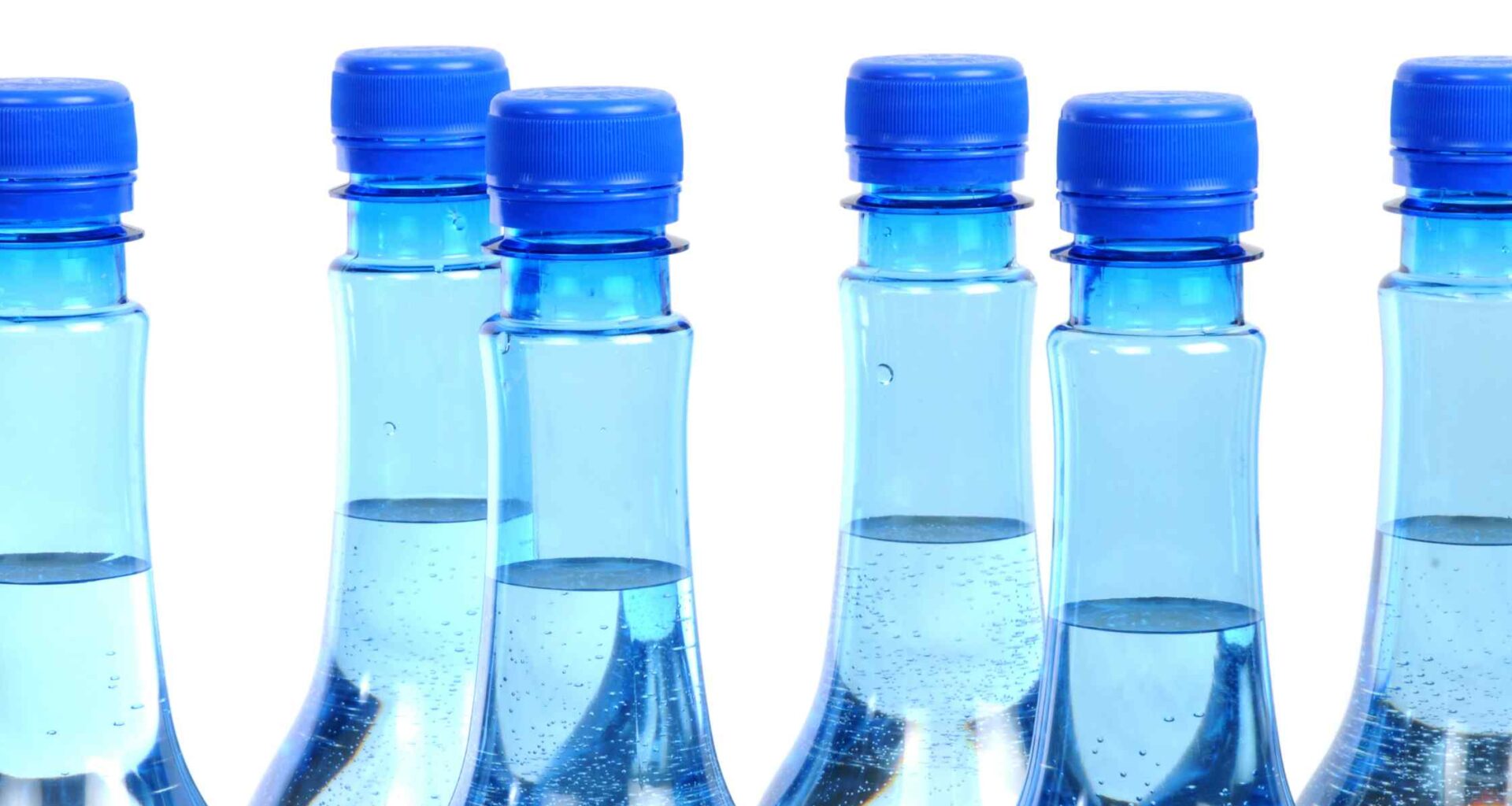Ever found yourself gazing at that empty water bottle in your car, while your fuel gauge flirts dangerously close to ‘Empty’? You might even wonder: “Can I put gas in a water bottle?”.
Well, my friend, hold onto your hats. Because we’re about to embark on a thrilling journey through the world of flammable liquids, plastic containers, and why this might not be the best idea you’ve ever had.
“Fuel and water bottles – a match made in… well, definitely not heaven.”
We’re going to tackle this from all angles – with a dollop of science, a sprinkle of legalities, and, of course, a hearty dash of common sense. So, buckle up! This is going to be fun.
Gas in a Water Bottle?
Let’s play a little game of imagination, shall we? Picture yourself holding a water bottle filled with gasoline. Intriguing and dangerous at the same time, isn’t it? But hold your horses – this isn’t a wild west movie, it’s real life.
Now, you might wonder, “Can I actually put gasoline in a water bottle?” The simple answer is yes, but should you? A resounding no! And here’s why:
- Material Reaction: Most water bottles are made of plastic, and gasoline can eat away at many types of plastic, causing leaks and spills. The result? A hot mess that’s not good for anyone.
- Safety Concerns: Gasoline is highly flammable, and storing it improperly can lead to fires or even explosions. A water bottle, while handy, is hardly a safe storage container for such volatile substances.
- Legal Issues: In many places, it’s actually illegal to store gasoline in non-approved containers. You don’t want a brush with the law, do you?
So while that water bottle might look like a convenient gas can in a pinch, it’s really a disaster waiting to happen. Better to stick with approved containers and leave the water bottles for, well, water.
Remember, safety always comes first, especially when dealing with substances as dangerous as gasoline.
What To Use Instead?
If you find yourself in a situation where you need to store gasoline, be sure to use an approved container. These are designed to safely hold gasoline and prevent accidents. They are available in various sizes and are usually made of metal or high-density plastic that won’t be degraded by the fuel.
So, next time you consider using a water bottle for gasoline, remember the risks and opt for a safer, more responsible solution.
Why You Should Never Put Gas in a Water Bottle
So, you’ve probably heard some wild ideas in your lifetime, but “Can I put gas in a water bottle?” might take the cake! Before we dive into the reasons, let’s get one thing straight: It’s a resounding no!
Now, why should you never consider this?
- Safety Risks: Gasoline is a highly flammable liquid. Storing it in a water bottle can lead to accidental ignition or even an explosion. Imagine if a child mistook it for a water bottle, the results could be catastrophic.
- Chemical Reactions: Gasoline can react with the plastic material of a water bottle, causing it to degrade or melt. This could lead to gasoline leaks, an unpleasant mess at best, and a serious hazard at worst.
- Legal Concerns: In many places, it’s illegal to store gasoline in unapproved containers. You could face hefty fines or even jail time. The law is there for a reason, folks!
So, the next time you’re tempted to play fuel storage roulette, remember this: gasoline has its place, and that certainly isn’t in your water bottle! Stay safe, and leave the gas for the gas cans. It’s a no-brainer, wouldn’t you say?
The Dangers of Putting Gas in a Water Bottle
Now, I know we’ve all had those “MacGyver” moments, where we think we can solve any problem with just the items around us. However, storing gasoline in a water bottle? That’s where we should draw the line, my friends. Because, trust me, the dangers here are far greater than the convenience.
But why? you may ask. Well, let’s take a closer look at what happens when we try to marry gas and water bottles.
The Chemical Reaction
First of all, gas and plastic don’t mix. Literally. Gasoline, with its complex hydrocarbon composition, can easily dissolve certain types of plastic. This means your water bottle – a trusty hydration companion – could leak, crack, or even completely fall apart.
Fire Hazard
Here’s a fun fact: gasoline is flammable. Okay, maybe that’s not so fun. But it’s critically important to remember. The smallest spark near a leaking gas-filled water bottle could result in a fire, or worse, an explosion. I’d say that’s a hefty price for trying to repurpose a water bottle.
Health Risks
Let’s not forget the health risks either. Gasoline fumes are toxic, and prolonged exposure can lead to serious health problems. Imagine accidentally taking a swig from that water bottle, mistaking it for your actual drink. The consequences could be dire.
So, while it might seem like a clever, resourceful idea at first glance, the dangers of putting gas in a water bottle are just too great. Let’s continue to use water bottles for, well, water, and leave the gasoline storage to approved containers.
What Happens When You Put Gas in a Water Bottle?
So, you’ve just pulled up to the pump, and a wild idea strikes you: what if I put gas in a water bottle? Hold that thought, and let’s explore what might happen if you decide to turn your ordinary water bottle into a makeshift gas can.
Simply put, it’s not the best idea. When gasoline comes into contact with a plastic water bottle, it doesn’t play nice. Gasoline is a solvent and can start to break down certain types of plastic, creating a dangerous situation where the bottle might leak or even burst.
But it’s not all about the physical danger. There are also legal implications to consider. In many places, transporting gasoline in unapproved containers is illegal. Water bottles just don’t make the cut when it comes to safety standards.
Chemical Reaction
Gasoline is a complex mixture of hydrocarbons, which include some pretty potent chemicals. When these chemicals come into contact with the plastic of your water bottle, a reaction can occur. This reaction can result in the bottle melting, warping, or even bursting.
Transportation Hazards
Transporting gasoline in a water bottle is a safety hazard. The gasoline can easily spill, creating a dangerous situation. Not only could you damage your vehicle, but you could also potentially cause a fire.
Environmental Impact
Let’s not forget about Mother Earth. Gasoline spills can have devastating effects on the environment. It’s a toxic substance that can contaminate soil, water, and air. So, even a small spill from a leaking water bottle can have serious environmental consequences.
In conclusion, while filling up a water bottle with gasoline might seem like a convenient solution in a pinch, it’s simply not worth the risk. Stick to approved containers for storing and transporting gasoline and keep your water bottles for water. It’s safer for you, those around you, and our planet.
Alternatives to Putting Gas in a Water Bottle
So, you’ve found yourself in a bit of a pickle. For some reason, you’re considering putting gas in a water bottle. Before you take this drastic step, let’s talk about some alternatives that are safer and more practical.
Gas Cans: These are designed specifically for storing and transporting gasoline safely. The material they’re made from can withstand the corrosive nature of gasoline. They also have a spout for easy pouring and a vent for pressure release, which water bottles lack.
Note: Always use approved fuel containers when storing gasoline. Never use glass or plastic containers that are not approved for fuel storage.
Portable Fuel Tanks: Similar to gas cans, portable fuel tanks are designed for the safe storage and transportation of gasoline. They come in larger sizes and are perfect for boating, camping, or any activity that requires a significant amount of fuel.
Service Stations: The safest and most recommended option is to fill your vehicle directly at a service station. They meet stringent safety regulations and standards.
Remember, safety should always be your top priority. The few dollars you might save by using a water bottle for gas could cost you a lot more in potential damages or health risks.
Consider the Environment
Aside from safety concerns, remember that gasoline is harmful to the environment. Improper storage can lead to spills, which harm not only the soil but also the water systems. Always consider the impact on Mother Earth before making such decisions.
How to Properly Handle Gasoline
Oh, so you’ve found yourself with a surplus of gasoline and you’re pondering the possibility of using a water bottle to store it? It’s a common thought, but is it a wise one? Let’s dive in!
First off, storing gasoline in a water bottle is a big no-no. This is not just me being a party pooper, it’s actually against the law in many places. Why, you ask? It’s purely a matter of safety.
Let’s get science-y for a minute. Gasoline is a volatile substance. It gives off fumes and can easily ignite. A water bottle, especially a plastic one, is not designed to safely store such a substance.
- Plastic bottles can’t withstand gasoline’s corrosive properties, which could cause the bottle to leak or even burst.
- The accumulation of gasoline fumes can create an explosive situation. Ever seen a movie where a tiny spark causes a massive explosion? It’s not just Hollywood drama – it can actually happen!
So, what’s the right way to store gasoline? I’m glad you asked!
- Always use a container that is approved for gasoline storage. These containers are made of materials that resist the corrosive properties of gasoline and are designed to safely vent fumes.
- Store the container in a well-ventilated area, away from living spaces and sources of ignition.
- Never fill the container to the brim. Leave some space for the gasoline to expand with temperature changes.
Remember, gasoline is not your average liquid. It’s a highly flammable and potentially hazardous substance. Treat it with respect and follow safety guidelines, folks!
There’s More to It Than Just Safety
Beyond the safety reasons, there are other reasons not to store gasoline in a water bottle. Confusion is a big one. Imagine someone mistaking it for water! That’s a disaster waiting to happen. Plus, it’s not exactly eco-friendly. Plastic bottles are already a big issue for our planet, let’s not add fuel to the fire (pun intended).
In conclusion, don’t store gasoline in a water bottle. It’s dangerous, it’s potentially illegal, and it’s certainly not worth the risk. Stay safe!
Why Gasoline Should Always Be Stored in Approved Containers
Have you ever been tempted to store gasoline in a handy water bottle? I get it. It seems like a quick and easy solution when you’re in a pinch. But let me tell you, this is an idea you should put back on the shelf!
Gasoline is a volatile substance, and by volatile, I don’t mean it’s prone to mood swings! It’s highly flammable and potentially explosive under the right conditions, which is why it needs to be stored in approved containers.
These containers aren’t just about being sticklers for rules. They’re specifically designed to keep you and your surroundings safe. Let’s break it down:
- Materials: Approved containers are made from materials that can safely hold gasoline without leaking, breaking, or causing a dangerous chemical reaction.
- Design: The design of these containers includes features to prevent spills, manage vapors, and provide safe handling.
- Testing: Before they’re approved, these containers go through rigorous testing to ensure they can withstand the volatility of gasoline.
On the other hand, a water bottle, though it seems innocent enough, doesn’t meet any of these criteria. It’s like putting a tiger in a kitten’s playpen – a dangerous mismatch!
So next time you’re contemplating on storing gasoline, remember to use an approved container. It’s not just about following rules, it’s about keeping everyone safe. That’s definitely something worth driving home!
What to Do If You Accidentally Put Gas in a Water Bottle
Oops, did you just pour gasoline into a water bottle by accident? Don’t panic, we’ve all been there. Let’s navigate this sticky situation together.
First things first, understand that gasoline is a hazardous material. It’s not something you want to be laying around, especially in an unsuspecting water bottle.
Now, what can we do about it?
- Don’t attempt to drink or smell the gasoline. Even inhaling it can be harmful.
- Put on protective gloves before handling the bottle. Gasoline can cause skin irritation and burns.
- Find a well-ventilated area to work with. Outdoor spaces are ideal to avoid inhaling any fumes.
Next, it’s time to dispose of your gasoline-filled water bottle properly.
- Place the bottle in a sealable, disposable bag.
- Take it to a local hazardous waste disposal facility. They’ll know how to handle it safely.
- Never dispose of gasoline in your regular trash or down the drain. It’s harmful to the environment and can cause explosions.
Let’s keep those water bottles for water, and the gas for our cars, shall we?
Tips for Safely Transporting Gasoline
Ever found yourself wondering, “Can I put gas in a water bottle?” Well, buckle up, my friends, because we’re about to dive into some serious gasoline transportation tips. I’ll be your guide on this wild, flammable ride, so let’s get started!
First things first, never use a water bottle, or any other non-approved container, to store or transport gasoline. It’s a big no-no – not just because I’m telling you, but because it’s actually against the law.
Remember, gasoline is not just your regular liquid; it’s a highly flammable substance that demands respect. Handle it like the potent potion it is!
So, what should you use? Glad you asked! Make sure to use only containers specifically designed and approved for gasoline storage. These containers are made with special materials resistant to the corrosive nature of gasoline and have safety features to prevent spills and leaks.
- Before you fill up, make sure the container is on a flat surface and grounded. This helps prevent any static sparks which could ignite the gasoline.
- Don’t overfill the container, leave some room for the gasoline to expand.
- Once filled, tightly close the container and make sure it’s sealed properly to prevent any leaks or spills.
And there you have it, transporting gasoline like a pro! Next time you’re in a fuel-filled pickle, you’ll know exactly what to do. Stay safe out there!
The Environmental Impact of Improper Gasoline Handling
Alright, folks, let’s have a little chat about gasoline. You’ve probably heard it’s not the best pal of Mother Earth, but do you know how naughty it can be when mishandled? We’re talking serious environmental harm here.
Gasoline, our trusty friend that keeps our engines running, is actually a complex mixture of hydrocarbons. When not contained properly, it can cause soil and water contamination, leading to severe environmental damage.
Picture this: you’ve decided to put gasoline in a water bottle. An innocent move, right? Not quite. That gasoline could leak, seep into the soil, and eventually reach our water sources. Once it’s there, it’s a real party pooper for the local flora and fauna, causing plants to wither, fish to suffer, and natural habitats to degrade.
But wait, there’s more! Gasoline contains volatile organic compounds (VOCs). When released into the air, these VOCs contribute to the formation of ground-level ozone, which is a key component of smog. Not a pretty sight, huh? And certainly not a breath of fresh air.
So, before you reuse that water bottle, remember the potential consequences. It’s not just about the here and now; it’s about protecting our environment for future generations. Let’s give Mother Earth the respect she deserves.
“We do not inherit the earth from our ancestors, we borrow it from our children.” – Native American Proverb






